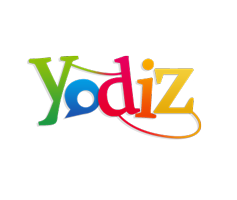
As a Release Train Engineer (RTE) it is your job to facilitate the Program Increment (PI) planning session, which can seem overwhelming if you have not done it before. Here are some helpful tips to prepare you for the PI planning session whether it is your first time or if you simply want to further your “drive for relentless improvement.”
1. Secure an Executive Sponsor
Having an executive sponsor in your session is a great way to get the top down and bottom up engagement. Ask your executive to join even if it’s just to open the PI planning session. Have them give a brief overview of why you are doing this program and it will help the teams see the engagement and commitment throughout the company and help the executive understand how the day to day work is done. Executive sponsors are typically very busy, so be sure you have a slot in their calendars as early as possible to ensure attendance.
2. Schedule a pre-planning session
Invite all relevant team members, which can include (but is not limited to) scrum masters, lead developers, lead architects and product owners for all teams that will be in the PI session.
3. During the pre-planning session
- Find a room large enough to accommodate the entire team. Arrange for food and coffee to be available throughout the day.
- Prepare the two-day PI session agenda.
- Send out the agenda to the whole team in advance.
- Once the session is complete, it’s always a good idea to get drinks or go out to eat together to ensure team building.
4. Arrange (at least) two separate feature briefing sessions
Schedule these two feature briefing sessions at least 2 weeks prior to the PI session to ensure everyone from business, architecture, development teams and management are fully aligned on the scope.
5. Ensure that features are ready as candidates for the PI session
Ensure product owners and product managers are having continuous refinement sessions and are involving the business and all needed teams so there are as few open points as possible in the PI session. Feature visualization and their dependencies on a single board will highlight underlying problems that RTE should focus on. This will also help to prepare a list of items that are crucial for the upcoming PI.
6. Ensure Engagement with the system architecture team
Involve the system architecture team to ensure architecture runway and enablers are in good shape for the planning session.
7. PI Execution
- Ensure all the participants are engaged. The first step to ensure this is by making sure you have the right people in the room.
- Ensure there is a constant dialogue among the team members by walking around the room and asking questions to the teams such as, “do any of your features/stories have dependencies on any of the other teams?” If they do, ensure the two teams discuss.
- Have periodic 15 minute Scrum of Scrums meeting during the team breakout sessions to ensure all teams are working towards a common goal.
- Make sure dependencies are identified, understood and are marked on the program Board.
- Ensure that program board is visible in PI session indicating progress of teams collaboration and brainstorming.
- Have a designated swimlane for each team that is participating on the program board.
- Improvise and if non-conventional things like environments, legal or other dependencies are required, make a special swim lane and put all those activities as enablers to make them visible dependencies on the program board.
8. Tools
Use a tool that synchronizes Team Level user stories status and progress into Program Level board. Check out Kendis, a powerful Program Increment planning tool to conduct promising Agile Release Trains.
9. Arrange an evening activity after the first day of the PI session
Use the opportunity of having everyone together to arrange dinner, drinks and create an environment where people can have fun and build relationships with the other teams. You will find this to be a great side benefit of the PI session and often issues that come up during the PI will get resolved sooner if individuals have a personal relationship with one another.
10. Closing of PI
- Run a short retrospection on the PI session at the end of the second day. This will ensure you constantly improve.
- Agree on the days and dates for regular sessions like Scrum of Scrums, Inspect & Adapt, PO meetings, Integration team meetings, etc.
- Agree on the next PI session dates
- Clean the room and have good byes

Yodiz is an innovation leader in Agile Project Management tools. We have customers from 60+ countries who get benefit of using seamless experience of agile practices without worrying about setup and administration settings.
If you would like to talk with Yodiz to see how you can benefit from an agile management tool, then contact us and we will arrange a meeting for you with one of our experts.
